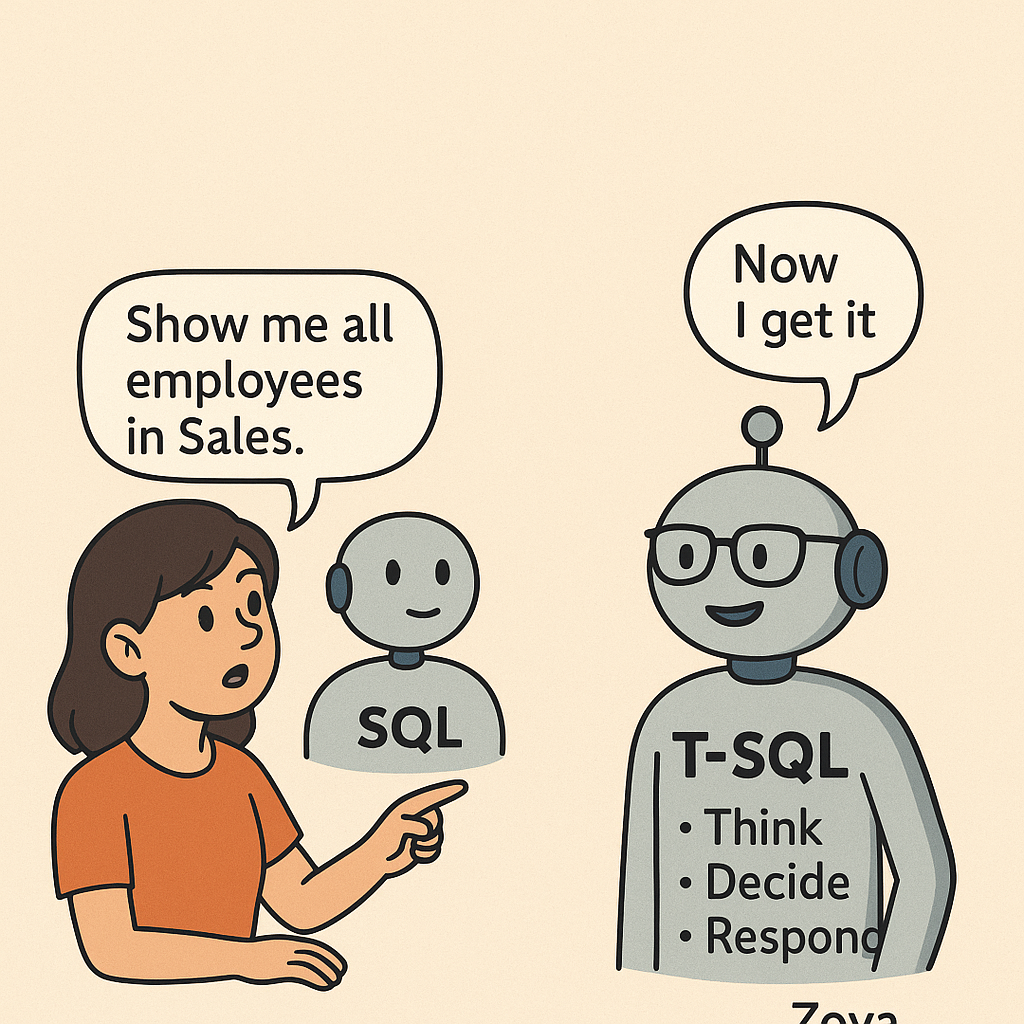
Meet Zoya, a data coordinator at a large company. She uses SQL to run reports like:
“Show me all employees in the Sales department.”
Simple stuff.
One day, her manager asks:
“Can you also check if they’re active, group them by role, and skip the interns… unless it’s Monday?”
Zoya blinks.
“Wait, that’s not a simple SELECT anymore.”
That’s when her teammate Aamir smiles and says:
“You need T-SQL. Think of it as SQL with brains.”
Chapter 1: What is T-SQL, Really?
Aamir explains:
“SQL is like asking a question: ‘Show me all the customers.’
But T-SQL lets you think, decide, and respond.”
With T-SQL, Zoya could:
- Use variables to store conditions
- Use IF…ELSE to handle exceptions
- Loop through data with WHILE
- Add error handling like in real programming
- Create stored procedures for tasks she runs every day
Chapter 2: A Day with Plain SQL vs T-SQL
Plain SQL:
SELECT * FROM Employees WHERE Department = 'Sales';That works fine…
But what if she needs this logic:
“If it’s Monday, include interns.
If not, exclude them. Also, count only active employees.”
Here’s how T-SQL helps:
DECLARE @Day VARCHAR(10) = DATENAME(WEEKDAY, GETDATE());
IF @Day = 'Monday'
SELECT * FROM Employees WHERE IsActive = 1;
ELSE
SELECT * FROM Employees WHERE IsActive = 1 AND Role != 'Intern';“Whoa. SQL can now think like I do!” Zoya says.
Chapter 3: Automating the Routine
Before T-SQL, Zoya used to:
- Copy-paste queries
- Manually change filters every day
- Run the same logic over and over
Now, she writes a stored procedure:
CREATE PROCEDURE GetDailyEmployeesReport
AS
BEGIN
-- Logic using T-SQL
END;She just runs:
EXEC GetDailyEmployeesReport;Done. Automated. Clean.
⸻
Chapter 4: Zoya’s Realization
T-SQL is not a different language.
It’s SQL + intelligence for Microsoft SQL Server.
“It’s like having a smart assistant who remembers things, makes decisions, and helps me do more than just ask questions.”
⸻
Conclusion: SQL Asks. T-SQL Thinks.
Zoya still writes SQL. But now she builds logic, handles exceptions, and automates tasks—all thanks to T-SQL.
“With T-SQL, I don’t just query data—I manage it like a pro.”

Leave a Reply